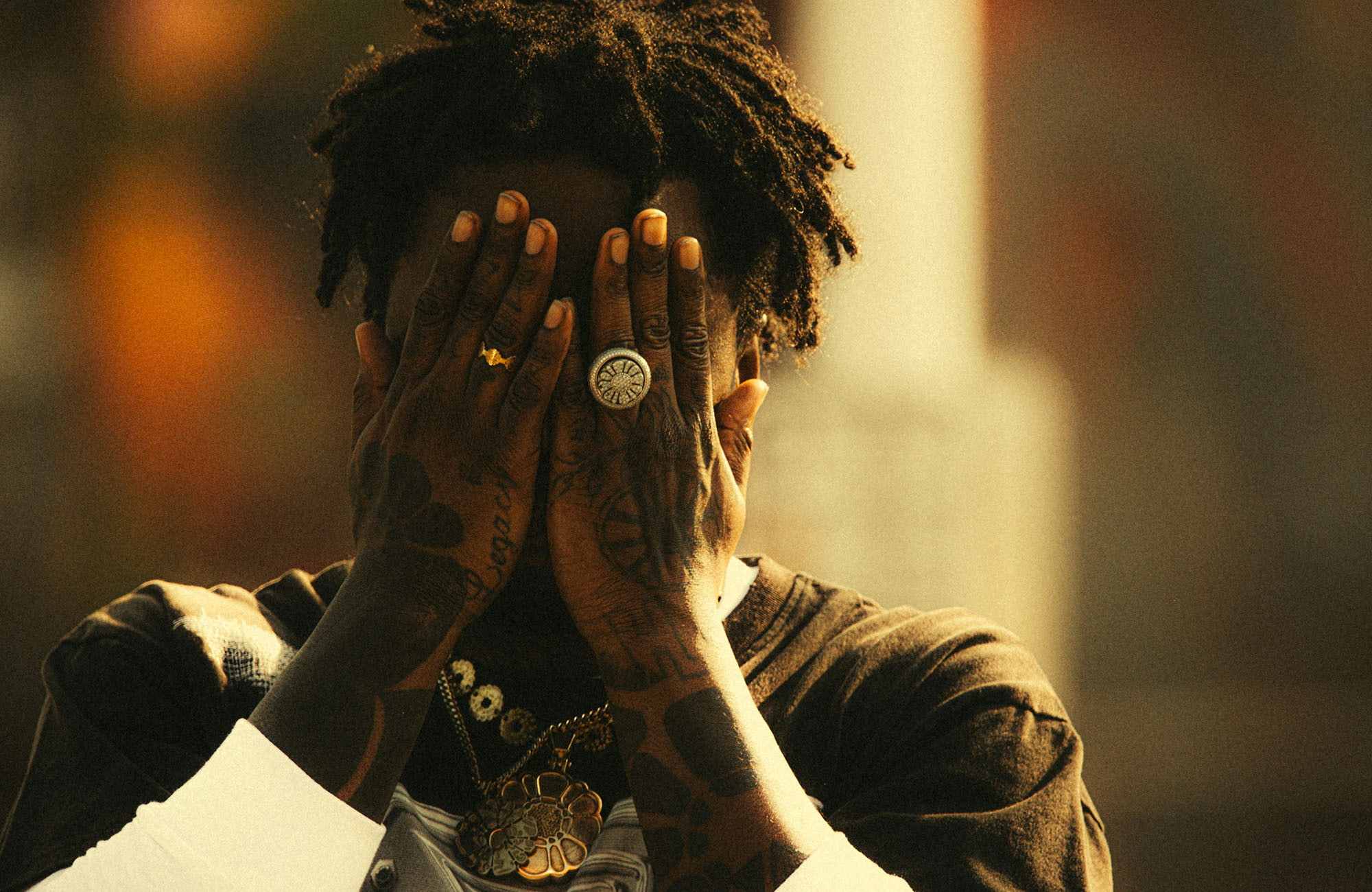
Dark Energy: How to Turn Pain Into Art Without Losing Yourself
Some of the most powerful songs ever written come from pain. When life gets heavy, music becomes more than just sound — it becomes therapy, confession, and survival. Artists like NF, Eminem, and J. Cole have turned their darkest emotions into timeless music that connects deeply with people because it feels real.
But there’s a fine line between expressing your pain and getting trapped in it. Channeling dark emotions can heal you, or it can consume you — depending on how you approach it.
This article explores how to transform your struggles into meaningful art without losing yourself in the process. You’ll learn how to stay mentally balanced, emotionally honest, and creatively in control while turning your pain into music that moves others.
If you want to start writing from that raw emotional space, try creating over dark beats from Tellingbeatzz — instrumentals designed to bring depth, emotion, and cinematic power to your story.
Why Pain Creates Powerful Art
Pain forces honesty. When everything is going well, it’s easy to stay on the surface — to write catchy lines or chase trends. But when life hits hard, your defenses drop, and your words become raw. That’s why music born from pain often feels more authentic.
Listeners can tell when you mean what you say. They can feel it in your tone, your timing, your silence between bars. True art doesn’t come from perfection; it comes from vulnerability.
However, emotional expression is only healing when it’s intentional. If you use music just to vent, it might help in the moment, but it can also keep you stuck in the same emotional loop. The goal is to transform pain into something meaningful — something that releases you instead of trapping you.
That’s the essence of turning dark energy into art.
Step 1: Acknowledge the Darkness, Don’t Avoid It
The first step in transforming pain into art is facing it — not running from it. Denial blocks creativity. The more you suppress your emotions, the more they control you subconsciously.
Sit with your feelings. Write them down before you even touch the beat. Don’t try to make them rhyme or sound “hard.” Just describe what’s real: the anger, the fear, the loss, the confusion.
Once you’ve faced the emotion, the music becomes the translation — a way to shape what’s chaotic into something that has form and rhythm.
When you choose a dark beat to write over, let the sound mirror what you feel inside. The deep bass, slow tempo, and moody melodies act as a canvas for everything you’ve been holding back.
You’re not escaping your pain — you’re giving it a voice.
Step 2: Turn Emotion Into Story
Raw emotion hits hard, but story gives it direction. If pain is fire, storytelling is the container that prevents it from burning out of control.
Instead of saying, “I’m broken,” show the listener why. Paint scenes with your words. Describe the moment things fell apart, the silence after an argument, the empty space that used to hold someone you loved.
Every detail makes the emotion more tangible. And the more specific you are, the more universal your story becomes — because people don’t just connect to pain; they connect to truth.
When writing, ask yourself:
-
What event triggered this feeling?
-
Who was involved?
-
What did I learn or lose from it?
-
How has it changed me?
Turn that emotional map into lyrics. Even a single 16-bar verse can become a powerful story if it’s told honestly.
Dark instrumentals — especially those from the Dark Beats section on Tellingbeatzz — are perfect for storytelling. They give space for emotion to breathe, helping your words hit harder.
Step 3: Protect Your Mental Health While Creating
Here’s the paradox: creating from pain can heal you, but it can also reopen wounds. You have to know when to step away.
Music is supposed to express emotion, not trap you in it. So build boundaries into your creative process:
-
Set emotional limits: If you start feeling overwhelmed, take a break. Step outside, breathe, or switch tasks.
-
Separate art from identity: The pain you write about is something you experienced, not who you are.
-
Finish songs in stages: Don’t force yourself to finish heavy material in one session. Spread it out so you can process between takes.
-
Use grounding rituals: After intense sessions, do something that reconnects you with the present — exercise, meditate, or talk to a friend.
The goal is to process emotion through your art, not drown in it. Nipsey Hussle once said, “The best thing you can do for a person is to inspire them.” That includes yourself.
If your music helps you find strength, your listeners will feel that strength too.
Step 4: Find the Balance Between Darkness and Light
Even in your darkest tracks, leave room for light. Pain without growth is just suffering. What makes songs like “Love Yours” by J. Cole or “Therapy Session” by NF so powerful is that they don’t just describe pain — they transform it into reflection and purpose.
When you write about struggle, try to include:
-
Contrast: Show both the problem and your progress.
-
Resolution: Leave a hint of hope, even if it’s small.
-
Perspective: Acknowledge how pain changed you for the better.
This doesn’t mean forcing positivity. It means letting your art evolve as you do. You’re not the same person who wrote your first song — and your lyrics should grow with you.
Over time, you’ll notice that what started as pain becomes wisdom. And your music becomes not just therapy for you, but healing for others.
To experiment with this contrast, try writing a two-part song — one verse over a dark beat and another over a lighter, inspiring one. The difference in tone will highlight your emotional journey.
Step 5: Use Music as Transformation, Not Escape
Many artists fall into the trap of using music to avoid dealing with their emotions. They write about pain constantly but never move past it. That’s emotional looping — and it’s dangerous.
Music should help you process, not hide.
Every track should bring you one step closer to understanding yourself, not just repeating the same wound.
Try to approach each song as a conversation with your pain:
-
What is this emotion trying to teach me?
-
What part of me needs healing?
-
How can I express this in a way that helps others too?
When you ask deeper questions, your writing shifts from reaction to reflection. That’s when your lyrics become timeless — because they carry emotional truth and personal growth.
You can hear this transformation in artists like Eminem, who evolved from anger and chaos to reflection and maturity. Pain became his teacher — and music was the classroom.
Let your pain teach you, too.
Step 6: Collaborate and Connect Through Vulnerability
Pain isolates — but art connects. One of the most healing things you can do is collaborate with other artists who share your vision. Whether it’s a feature verse, a co-written hook, or a joint project, collaboration helps you step outside your own perspective.
It reminds you that you’re not alone in your emotions — and that’s powerful.
Reach out to producers or vocalists who specialize in emotional, moody instrumentals, like the ones you’ll find in the Dark Beats section. A great beat can help you express feelings you can’t even put into words.
And when two artists connect on that level, the music becomes bigger than both of you — it becomes a shared healing process.
Step 7: Let Go After Creation
Once your song is finished, release it emotionally. You’ve done your job — you’ve turned something painful into something meaningful. Now it’s time to let it go and move forward.
Holding onto pain just to stay “inspired” can drain you creatively and mentally. Trust that the next chapter of your life will bring new emotions, new challenges, and new art.
Every song you finish is a form of closure — a snapshot of who you were at that moment. Let it exist as proof that you survived, learned, and created something beautiful from it.
Your audience doesn’t just need your pain — they need your growth.
Final Thoughts
Turning dark emotions into art is one of the bravest things an artist can do. It requires honesty, vulnerability, and the courage to confront yourself. But the goal isn’t to glorify pain — it’s to transform it.
When you express pain through music intentionally, you create more than songs — you create healing. Both for you and for anyone listening who feels the same.
To begin that process, explore dark beats on Tellingbeatzz. These instrumentals are built to help you dive deep into emotion while staying grounded in control and purpose.
Because real strength isn’t about avoiding darkness — it’s about learning to create light from it.


No Comments